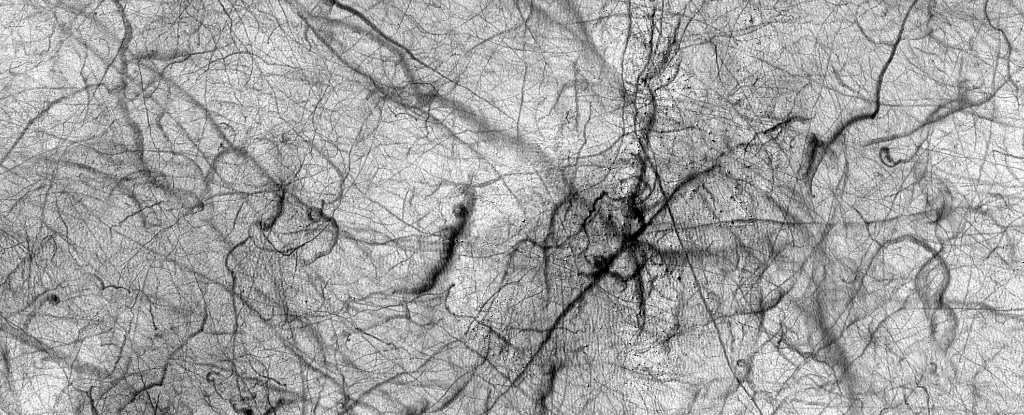Mars, often called the “Red Planet,” continues to captivate scientists and enthusiasts alike with its dynamic atmospheric phenomena. Most recently, an awe-inspiring image captured by the High-Resolution Imaging Science Experiment (HiRISE) aboard NASA’s Mars Reconnaissance Orbiter has provided a closer look at a fascinating aspect of Martian weather—dust devils. These swirling columns of dust and air not only reveal the movement of particles across the planet’s surface but also hold critical insights into Mars’ atmospheric conditions.
Dust devils on Mars are produced through a combination of factors that are unique to the planet. The thin atmosphere, primarily composed of carbon dioxide, leads to significant temperature variations on the surface. During the day, sunlight heats the Martian soil, creating warm air pockets that rise quickly and draw in cooler, denser air. As this warm air spirals upward, it carries dust particles, forming a rotating column that dances across the landscape.
The size and duration of these dust devils can vary widely. Some are small and transient, while others can grow to impressive sizes, reaching kilometers in diameter and lasting several hours. Their existence underscores the vibrancy of Mars’s atmosphere, despite its overall thinness, which is only about 1% the density of Earth’s.
Understanding the mechanics of dust devils is pivotal for scientists as they study the Martian climate and its evolution. These atmospheric whirlwinds contribute to the redistribution of dust—an essential process that influences weather patterns. On Mars, the dust serves as a key player in a feedback loop that can affect climate. For instance, as dust is lifted into the atmosphere, it can alter thermal properties and cloud formation, potentially leading to changes in temperatures.
Moreover, the dust that settles back onto the surface can accumulate over time, altering the landscape and impacting geological features. By analyzing dust deposition rates and patterns from the traces left by dust devils, researchers acquire invaluable data regarding the Martian environment’s stability and transformations across vast timescales.
The implications of studying dust devils extend beyond scientific curiosity; they are crucial for the safety and efficacy of future Mars missions. Dust accumulation poses a challenge for landing vehicles and exploratory rovers, as well as instruments such as solar panels that power these machines. Dust can obscure solar panels, significantly diminishing their efficiency and functionality.
However, dust devils can serve a dual purpose. While they can deposit annoying layers of dust on sensitive equipment, their powerful winds also have the potential to clean these surfaces. Some dust devils act like nature’s scrubbers, blowing away dust particles and thereby enhancing the performance of solar panels during missions. This paradoxical relationship between accumulation and cleaning underscores the vital need for ongoing research to ascertain how to best design equipment that can withstand or capitalize on these atmospheric phenomena.
As space exploration continues to evolve, the intricate dynamics of Martian dust devils offer a fascinating glimpse into the planet’s atmospheric processes. Through meticulous studies of images like the recent one from HiRISE, scientists can infer vital information about Martian weather patterns and past climate conditions, building a comprehensive understanding of our neighboring world.
The partnership of historical data, innovative technology, and scientific inquiry remains essential as humanity looks to deepen its understanding of Mars and prepare effectively for future exploration. The captivating dance of dust devils on the Martian surface is more than just a quirky aspect of its atmosphere; it provides a crucial key to unlocking the mysteries of the Red Planet and preparing for the next era of exploration.

